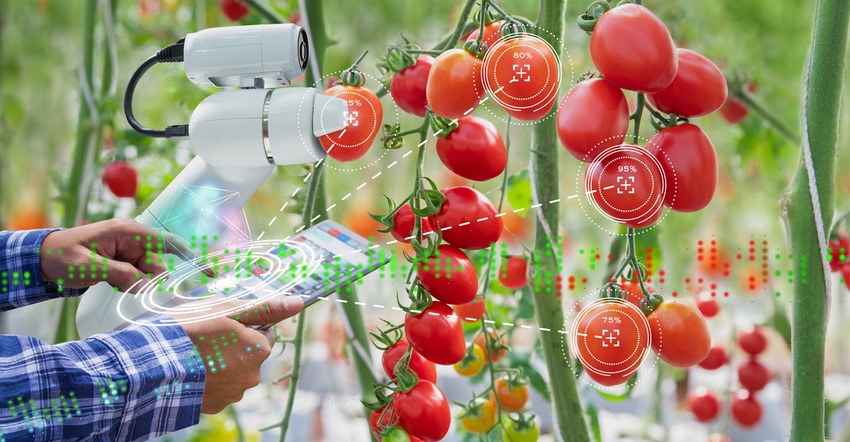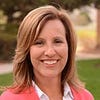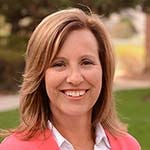
Post any story on social media regarding replacing human beings in production agriculture with robots or technology, and it is met with mixed emojis — some bright yellow smiles, others burnt red frowns.
Some love the idea of driverless tractors, while others find it a slippery slope to replacing the human aspect of farming altogether. However, one only needs to look at agriculture startups and find the future of farming as they view marrying manpower with machine power. They call it “Tech for Good.”
AppHarvest is a company that develops high-tech indoor farms designed to grow non-GMO, chemical pesticide-free produce. It has three sites in Kentucky where it claims to use up to 90% less water than open-field agriculture and only rainwater.
The only fully operational site in Morehead raises beefsteak tomatoes and vine tomatoes. In Richmond, the 60-acre facility being built will focus on fruits and vegetables. At the recent groundbreaking of the 15-acre indoor farm in Berea, the company will grow leafy greens.
Mark Keller is working with AppHarvest’s Morehead facility operation to pick only the ripest tomatoes. How? A little robot helps the human.
The company is developing universal robotic harvesters to provide a baseline of harvesting to come alongside human crop specialists, allowing them to focus on complex tasks. These robots can be configured to identify and harvest multiple crops of varying sizes.
In recent years, they have collected the world’s largest data set of tomato images, according to the company, enabling them to identify more than 50 varieties across varying stages of maturity, says Keller, the company’s senior vice president of software applications.
Each robot uses a set of cameras combined with an infrared laser to generate a 3D color scan of an area to determine the work it can perform. Once it maps the tomatoes, the robot assesses their orientation and determines if they are ripe enough to pick. The scan enables the robot to find the best and fastest route to pick the crop ahead of the arrival of the robotic arm and gripper.
Each robot can be programmed to make other quality assessments. It can identify hundreds of tomatoes in a fraction of a second without having to connect to the cloud, plus keep score on its success rate much like a video game. A built-in feedback mechanism constantly evaluates its efficiency, so the robot learns how to harvest any given configuration of fruit effectively.
Keller says the company already has the fifth-generation robot working on a farm in Europe. A sixth-generation robot is in the works in Maryland.
For the company and Keller, this is the future of farming. Robots and humans working together to bring fresh produce straight from the farm to the consumer in a sustainable manner. “It is using tech for good,” he adds.
Lessons from Amazon
Keller is well-versed in software systems, but he grew up surrounded by farmland in Moline, Ill., the homeplace of John Deere.
“Agriculture was in my blood,” he says. But Keller left his rural roots, headed west and started in software development. “What I wanted to do was apply technology to create operational efficiencies,” he says. He ended up forming the first Kiva robotic sortable warehouse for Amazon.
Never heard of Kiva Systems, which is now called Amazon Robotics? Think of it like the Roomba vacuum only bigger — it's the size of a large, 8 foot table.
“It drives out into the warehouse, picks up an entire shelving unit and drives it to a person who picks the product out of it, and then sends it off to be shipped,” Keller explains. No small feat in a massive building designed to ship millions of units a day. However, Amazon ran into a problem.
These buildings had multiple floors. So Keller designed the software to fix the problem and launched a new robotic system. So, he was tasked with another issue — Amazon’s one-hour delivery. To turn orders around that quick takes a short time frame — only seven minutes.
“I was all about automation,” Keller says. “We're going to throw robots at this, and then it turns out if you have seven minutes, the only way to do that was with humans, humans and cellphones.” The resulting software and process revolutionized how businesses run fulfillment centers today.
Quite an accomplishment for a guy from Illinois farm country. But during the recent Women in Agribusiness Summit, he shared how a conversation with family left him feeling unfulfilled.
Tech in sustainable farming
“My daughter, who is very socially conscious, wanted me to go do something different, something where I was applying myself to solve some of the world’s problems versus shipping product to people,” Keller explains.
He started searching for opportunities, and it led him back to agriculture. A different type of farming system, but still providing food with the caveat of saving resources.
Living on the West Coast, Keller came face-to-face with issues surrounding water or, more pointed, the lack of water. Unlike growing up in Midwest, he saw the challenge farmers faced with to grow food with less water. But he looked even deeper as to how farmers produce with a smaller footprint and fewer chemicals.
The answer, he feels, is with large indoor farms. That is when the small company AppHarvest caught his eye. “Any company that starts with sustainability as its primary goal, it attracted my attention,” says the now senior vice president of software applications for the company.
Much like an Amazon, the company builds massive greenhouses. “It produces probably 30 times the crop yield of an outdoor farm, and it does it internally and vertically with 30-foot-tall vines,” Keller explains.
He also loved the story behind AppHarvest. “The idea was could we bring jobs to the community, and could we bring local produce to the community that people could say came from our harvests?” Quite the opposite of Amazon, AppHarvest is about local. “It's not being shipped from somewhere else,” Keller says.
But the driver behind his career shift was the idea of using “Tech for Good.” “What you're trying to do is apply technology, but also look at the benefit it brings to the world versus to just yourself,” he says.
About the Author(s)
You May Also Like






